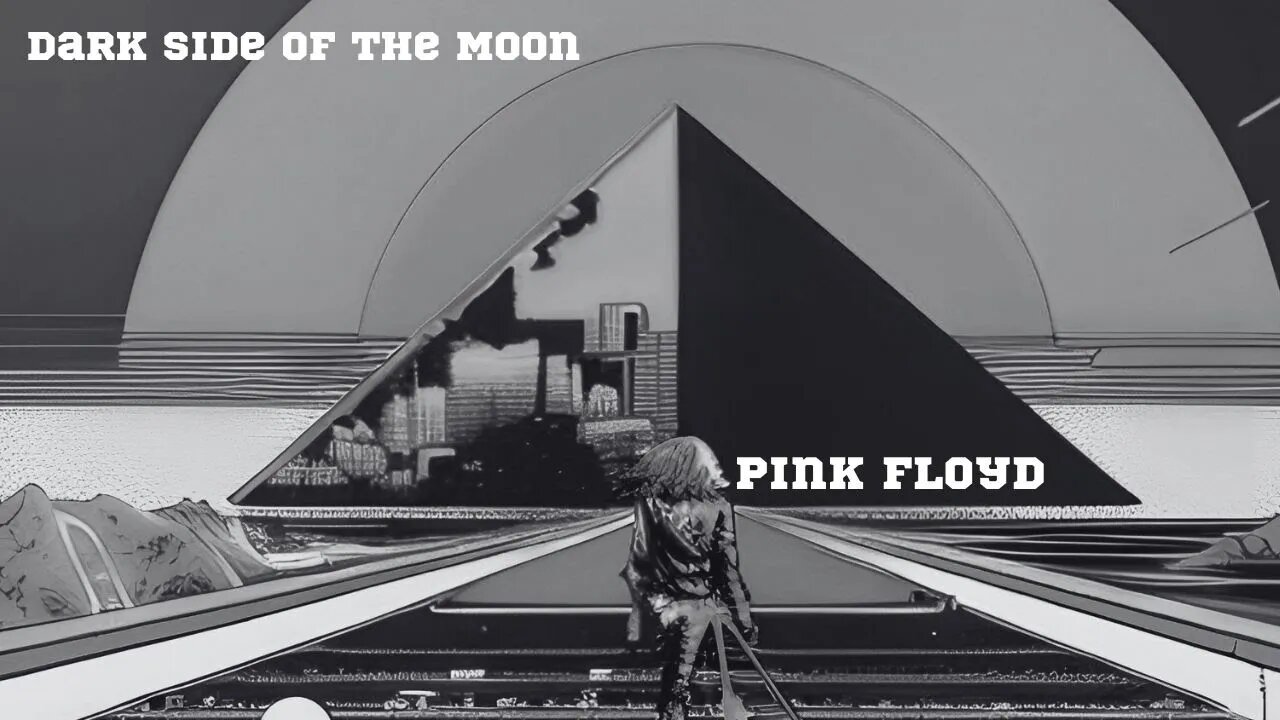Premium Only Content

Unbelievable! See How Pink Floyd Broke a Record that Hasn't Been Beaten in 47 Years! #shorts
The Dark Side of the Moon: An Enduring Musical Legacy
Pink Floyd’s The Dark Side of the Moon is undeniably one of the most iconic, bestselling and critically acclaimed albums of all time. Released in 1973, it remained on the US charts for an unprecedented 937 weeks – more than 18 years – and has sold over 45 million copies worldwide. The album’s sustained popularity and influence is a testament to its enduring musical legacy, both in terms of its technical achievements, thematic depth, emotional range, and cultural significance. In this article, we will explore the various factors that have contributed to the album’s monumental success, its underlying themes and concepts, and its impact on subsequent musicians and popular culture as a whole.
The Recording Process
To understand the significance of The Dark Side of the Moon, it is necessary to delve into the creative process behind the album. This was a period during which Pink Floyd was undergoing a significant transitional phase, both musically and personally. The band’s previous album Meddle, released in 1971, was a departure from its prior experimentation towards a more cohesive and well-executed sound. The success of Meddle gave Floyd renewed confidence in their abilities and allowed them to focus on their creative instincts.
The recording of The Dark Side of the Moon began in June 1972 at the newly built Abbey Road studios in London, which allowed the band to improve their sound quality and explore new production techniques. The album was produced by Pink Floyd in collaboration with sound engineer Alan Parsons, who had previously worked on the Beatles’ Abbey Road album. The recording sessions lasted for several months, as the band obsessively worked on perfecting the album’s sonic textures and arrangements.
One of the technical innovations that Pink Floyd used on the album was the use of multitrack recording, which allowed them to layer and mix different sounds together in a way that had not been done before. They also incorporated various sound effects such as clocks ticking, spoken-word samples, and snippets of interviews with random people, giving the album a distinct sense of space and time.
The album’s blend of different musical styles was also innovative at the time, incorporating elements of psychedelic rock, jazz, blues, and classical music. For instance, the album’s opening track “Speak to Me/Breathe” drew inspiration from jazz musicians such as Miles Davis, and featured a heavily distorted bass line that was reminiscent of funk music.
Although The Dark Side of the Moon was not a concept album per se, it followed a loose thematic framework that explored the human condition and the pressures of modern life. The album touched on various issues such as time, death, madness, greed, and the nature of existence itself, all themes that would resonate with a generation of listeners grappling with the uncertainties and anxieties of the post-WWII era.
Themes and Concepts
The Dark Side of the Moon is a complex and nuanced album that can be interpreted in many different ways depending on the listener’s perspective. However, there are a few key themes and concepts that run through the album and give it a cohesive and unified sense of purpose. Some of these themes include:
Time: Time is a recurring theme throughout the album, symbolizing both the fleeting nature of human existence and the inescapable march of history. The album’s opening track “Time” features various clocks ticking in different rhythms, symbolizing the relentless and unstoppable nature of time. The song’s lyrics warn against the dangers of wasting time and admonish listeners to seize the moment before it’s too late.
Madness: Another core theme of the album is madness, both as a personal affliction and as a broader societal malaise. Tracks such as “Brain Damage” and “Eclipse” explore the various forms of madness that can afflict individuals, from schizophrenia to anxiety and depression. The album also touches on the madness of the modern world, with songs such as “Money” and “Us and Them” addressing the corrosive effects of greed and war on society.
Death: Death is another recurring theme on the album, with songs such as “The Great Gig in the Sky” and “Eclipse” exploring the fear and uncertainty that death inspires. The album also touches on the inevitability of death and the need for acceptance and understanding in the face of mortality.
Isolation: The album’s closing track “Eclipse” touches on the alienation and isolation that can come from living in a modern, depersonalized world. The song’s lyrics suggest that only in recognizing our shared humanity and interconnectedness can we hope to overcome the barriers that separate us.
Disclaimer: The above article includes information and insights drawn from various Creative Commons sources. We acknowledge and give proper credit to the contributors of these sources and thank them for their invaluable contributions to this article.
-
 1:54:05
1:54:05
FreshandFit
3 hours agoYou Will Always Be Cheated On & This Is Why!
21K9 -
 LIVE
LIVE
Alex Zedra
4 hours agoLIVE! Playing CoD
1,353 watching -
 2:08:07
2:08:07
PandaSub2000
4 days agoDonkey Kong Bananza | ULTRA BEST AT GAMES (Original Live Version)
11K1 -
 59:09
59:09
Man in America
8 hours agoOrder From CHAOS: Epstein, Israel & Ancient Bloodlines w/ Todd Callender
72.9K20 -
 LIVE
LIVE
Price of Reason
9 hours agoTrump CANCELS Gavin Newsom's High Speed Train! Can Supergirl SAVE James Gunn Superman? Zelda Casting
124 watching -
 2:48:24
2:48:24
TimcastIRL
5 hours agoBREAKING: Trump Diagnosed With Chronic Vein Disease, Covers Bruised Hands With Make Up | Timcast IRL
187K77 -
 2:44:58
2:44:58
Barry Cunningham
6 hours agoPRESIDENT TRUMP IS LEADING AMERICA TO PROSPERITY! WHAT A DAY!
57.5K41 -
 2:32:33
2:32:33
The Quartering
5 hours agoTrump Epstein "Bombshell" From Wall St. Journal Then Expedition 33!
72.7K20 -
 LIVE
LIVE
SpartakusLIVE
6 hours ago$1,000 Spartakus Gauntlet on VERDANSK for the FIRST TIME || TrulyEvil, Enzo Alder, Firefighter MDO
240 watching -
 1:21:42
1:21:42
AimControllers
5 hours ago $0.89 earned🔴LIVE - TRIVIA NIGHT WITH PRIZES COME PLAY!
24.5K1